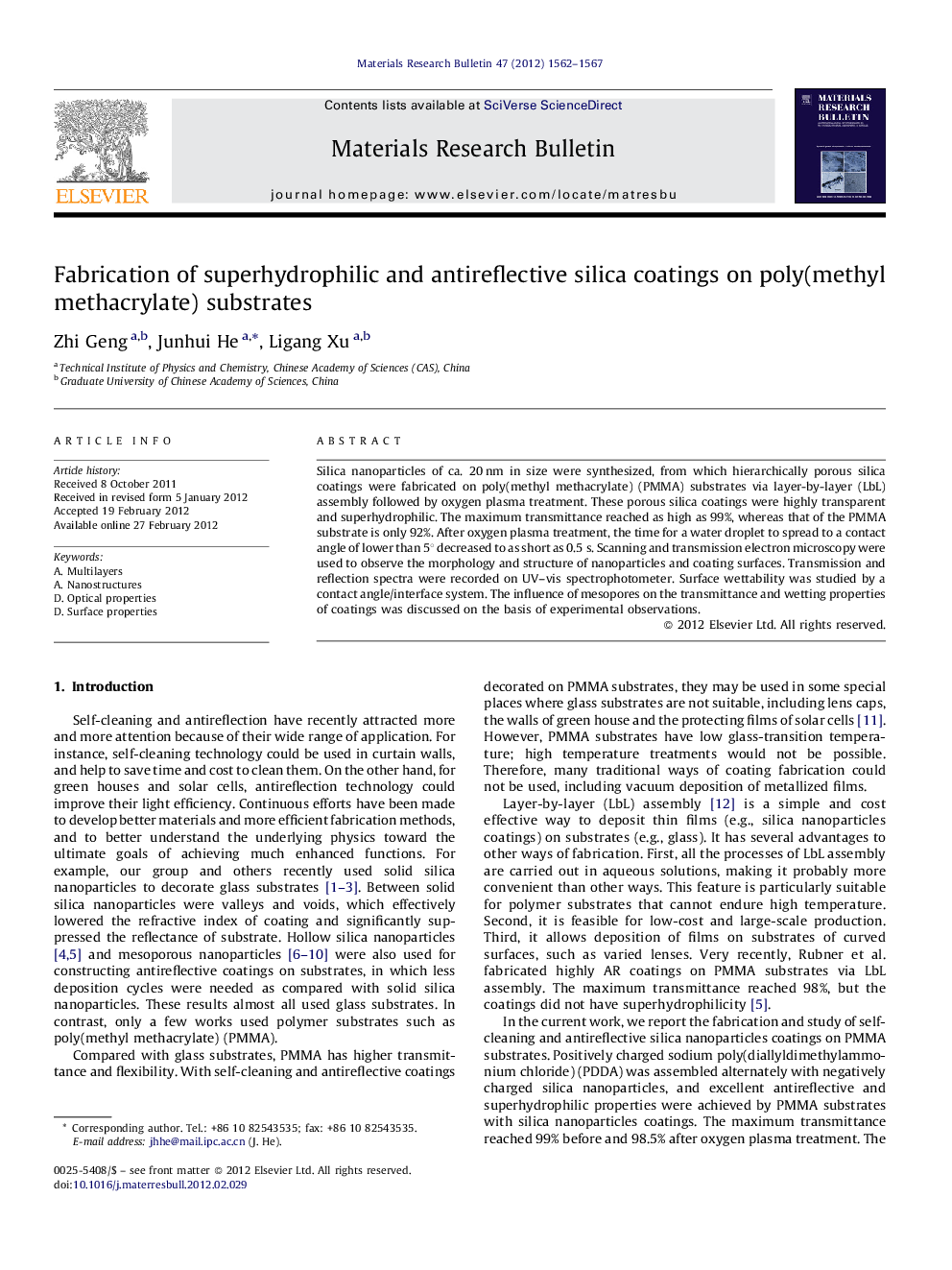| Article ID | Journal | Published Year | Pages | File Type |
|---|---|---|---|---|
| 1489795 | Materials Research Bulletin | 2012 | 6 Pages |
Silica nanoparticles of ca. 20 nm in size were synthesized, from which hierarchically porous silica coatings were fabricated on poly(methyl methacrylate) (PMMA) substrates via layer-by-layer (LbL) assembly followed by oxygen plasma treatment. These porous silica coatings were highly transparent and superhydrophilic. The maximum transmittance reached as high as 99%, whereas that of the PMMA substrate is only 92%. After oxygen plasma treatment, the time for a water droplet to spread to a contact angle of lower than 5° decreased to as short as 0.5 s. Scanning and transmission electron microscopy were used to observe the morphology and structure of nanoparticles and coating surfaces. Transmission and reflection spectra were recorded on UV–vis spectrophotometer. Surface wettability was studied by a contact angle/interface system. The influence of mesopores on the transmittance and wetting properties of coatings was discussed on the basis of experimental observations.
Graphical abstractSelf-cleaning and antireflection properties were successfully achieved by assembling (PDDA/S-20)n coatings on PMMA substrates followed by oxygen plasma treatment.Figure optionsDownload full-size imageDownload as PowerPoint slideHighlights► Porous silica coatings were created by layer-by-layer assembly on PMMA substrates. ► Silica coatings were treated by oxygen plasma. ► Porous silica coatings were highly antireflective and superhydrophilic on PMMA substrates.
